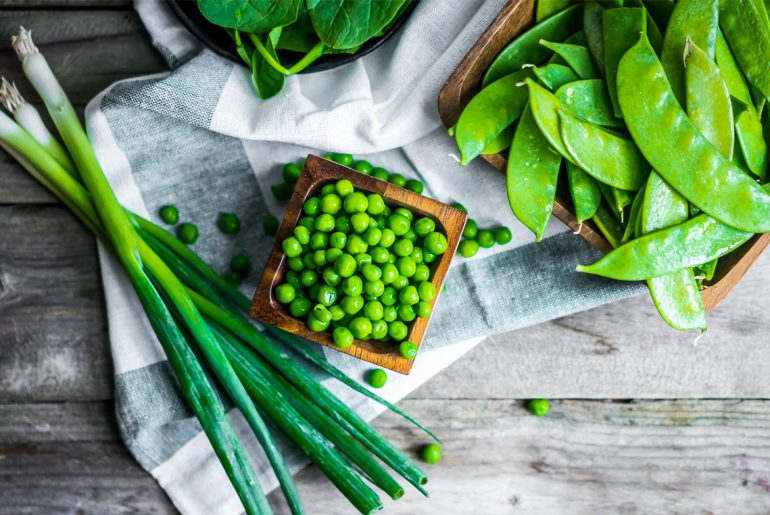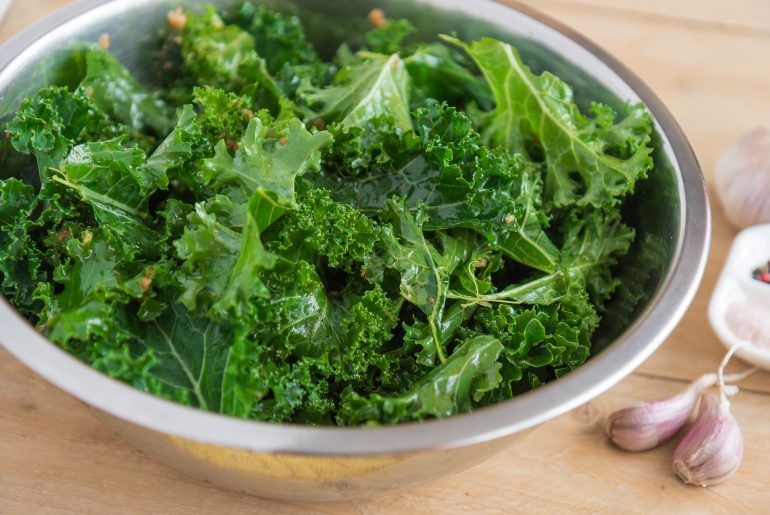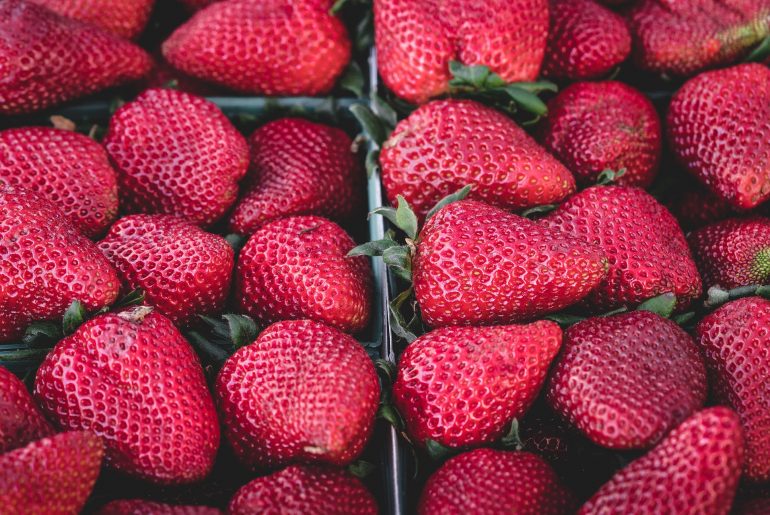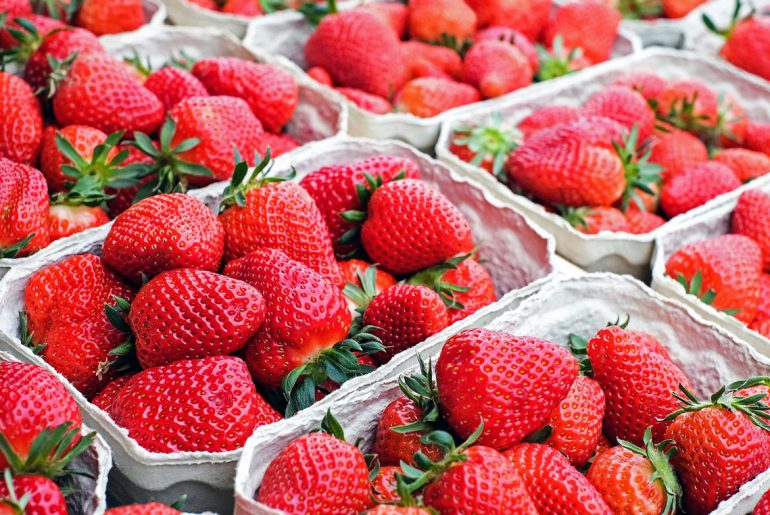The list of in season fruits and vegetables starts to lengthen in May as weather turns warmer for even the northernmost states. Citrus is on its way out, along with cool weather crops, but most of the country can now enjoy spring icons like asparagus and rhubarb. Southern and western states start to welcome summer produce like berries and cherries. Asparagus We really only get good asparagus for about two months of the year, so enjoy it all the time now, while you can. Try this asparagus tart with strawberry salsa for the ultimate spring brunch. Or go back to the basics with 4 ways to cook asparagus. Cabbage Cabbage comes back in season this month. This hearty vegetable can handle frost, but not heat. So even if we get a late-season frost, the cabbage crop still stays strong, but cabbage heads (which are mostly water) will expand and split…
April produce guide: What’s in season
You’ve given your thick sweaters and snow shovels the boot. It’s time to welcome spring and all the tender, young produce making its way to your dinner table this month. Spring is full of vibrant and delicious produce, so clear build your menu starting with these in-season produce. Not only will using produce in-season save you money, but it tastes better, too. It’s a win/win! Here’s what’s in season in April: Artichokes (Best Mar. – May) Artichokes come into season pre-holidays, around October, but they’re at their best from March until May. They may be time-consuming to prepare, but the tender leaves taste great stuffed or served with any number of dipping sauces. Asparagus (Best April – May) Arguably, the king of spring. Asparagus taste great raw, tossed in a fresh spring salad, but they’re also easy to roast, sauté, or even grill. Chives (May – June) Chives are one…
The 2019 Dirty Dozen reveals fruits and vegetables with most pesticides present
Exactly how safe is that produce in your kitchen? The Environmental Working Group (EWG) recently released its annual “Dirty Dozen” report naming the fruits and vegetables contaminated with the highest number of pesticides — and the list is full of everyday, household favorites. The EWG analyzed data from the United States Department of Agriculture. Overall, the USDA found 225 different pesticides on the common fruits and veggies Americans eat everyday. The tests were conducted before produce was washed or peeled — which shows that simple washing isn’t enough to eliminate pesticides from your produce. As a reminder, researchers have long-warned us that consuming pesticides can lead to a number of health issues including cancer and low fertility. Some fruits and vegetables that appear on the 2019 Dirty Dozen list are regulars (hello again, strawberries), but some are newcomers to the pesticide-laden list of shame. This year, kale seems to be…
18 tips on how to eat healthy and still save money at the grocery store
The average American house hold spends $6,600 on groceries every year — that’s $550 a month!. Are you doing all you can to make sure you’re getting the healthiest foods for your dollar? It can cost a lot to eat whole, healthy foods. In fact, the Harvard School of Public Health found that eating a diet rich in fruits and vegetables can cost about $2,000 more per year. But the real question is can you afford not to? With heart disease, cancer, and diabetes all on the rise, spending the cash now on fresh foods could save you big bucks on medical bills throughout your lifetime. This increased food expense is all the more reason to identify ways to make your money stretch. The most obvious area for savings is to eliminate food waste. Americans throw out $640 worth of groceries every year. Reduce this waste, and you’ve recouped a…
Save money and buy produce in season in March
March marks the beginning of the end of winter (yay!). It might not feel very warm when you walk outside your door, but spring is coming. March is also an interesting month for produce, as many winter fruits and veggies fall out of favor and we see the start of sweet fruits we associate with summer (hello, pineapple!). Come April, you’ll be planting your own seedlings and start to see more local variety, but for now, you’ll have to purchase ripe produce from the southernmost states. Get more bang for your buck by buying fruits and vegetables that are in season. They cost less because they are more plentiful — and they’re tastier, too! A big win, win. Here are 10 fruits and veggies ready for your plate right now: Artichokes Artichoke season runs from March through June (and then again in the fall), and most artichokes in the United States…
17 fruits and vegetables in season in December
It sure is cold outside! You’re definitely not going to stumble upon a strawberry outside anytime soon. But winter isn’t all bad. Thanks to modern methods of extending the growing season, farmers are able to produce fresh food well into winter. It can be easy to ignore what produce is actually in season come December when you can walk into any grocery store and it still looks like summer. Thanks to shipments from South America and beyond, we are spoiled, eating whatever we want, whenever we want. But if you want to eat food that hasn’t been picked before its prime, artificially ripened, and trucked thousands of miles, it’s worth considering making your selections from this list. Depending on where you live, these crops may continue to grow locally, or they’ll be trucked in from shorter distances. Plus, they’re naturally in season this time of year so they’ll taste best.…
Organic foods reduce your risk of certain cancers, study shows
If you’re still not a believer in organic food, consider a new study that suggests it can save you from some cancers. The study, published earlier this week in JAMA Internal medicine, found that those who frequently ate organic foods, had an overall lower risk of developing cancer. Specifically, those who primarily consumed organic foods where more likely to ward off postmenopausal breast cancer and non-Hodgkin Lymphoma than those who rarely or never ate organic. The study looked at the diets of 68,946 French adult volunteers. Researchers divided them into four groups depending on how often they said they ate organic foods including fruits and vegetables, meat and fish, ready-to-eat meals, vegetable oils and condiments, dietary supplements and other products. Participants were checked on, about four and a half years later. During that time, the volunteers developed 1,340 cancers. Breast cancer being the most common (459), followed by prostate cancer…
Why do apples turn brown when you cut them?
You come back from a quick trip to the copy room at work and discover that the beautiful apple you just bit into minutes ago is now brown and unappetizing. Why does this happen? As it turns out, the moment an apple is sliced, chopped, or bitten, a biochemical reaction commonly called “enzymatic browning” begins to take place. Specifically, the enzyme known as polyphenol oxidase (PPO) oxidizes polyphenols within the flesh of the fruit. This results in new chemicals (o-quinones) that react with amino acids and produce brown-colored melanins. But this discoloration can be avoided — somewhat. Not all apples brown at the same rate. Different apples contain different types of enzymes and polyphenols, thus altering their rate of discoloration. The Arctic Apple is genetically engineered to have non-browning flesh, but there are non-GMO apples that have this quality, as well. Cameo, SnowSweet, Cortland, Gala, Ambrosia, and Ginger Gold are…
Eat more fruits and vegetables to reduce risk of breast cancer, researchers say
As if you didn’t have enough reasons to eat your fruits and vegetables, a new Harvard study shows that women who get their daily servings, or more, have a lower risk of breast cancer, especially aggressive tumors, than those who eat fewer servings of fruits and veggies. Cruciferous vegetables such as broccoli, and yellow and orange vegetables, had a very strong link to lower risk of breast cancer. In the study, lead by researchers from Harvard T.H. Chan School of Public Health, researchers analyzed diet questionnaires from the Nurses’ Healthy Study (88,301 women, starting in 1980) and the Nurses’ Health Study II (93,844 women, starting in 1991). They found that women who ate 5.5 servings of fruit and vegetables each day had an 11% lower risk of developing breast cancer than those who ate 2.5 servings or fewer. (A serving is defined as one cup of raw, leafy vegetables, a half…
Strawberries top list of produce with most pesticides, avocados have the least
If you pass on the organic produce in order to save a few bucks, perhaps you should at least consider the organic strawberries, new research suggests. For the third year in a row, strawberries rank the worst on the Environmental Working Group’s Dirty Dozen list of fruits and vegetables. The annual list looks at which of our grocery store produce is harboring the highest number of harmful pesticide residues. This year, more than 98 percent of samples of fruits like strawberries, peaches, cherries and apples tested positive for at least one pesticide residue on the skin. About a third of all strawberry samples had at least 10 pesticides present, the study reported. One sample had an “astounding” 22 pesticide residues. Behind strawberries on the Dirty Dozen list landed spinach. About 97 percent of spinach samples showed pesticide residues were present. Nectarines, apples and grapes rounded out the top five. The report is based…










